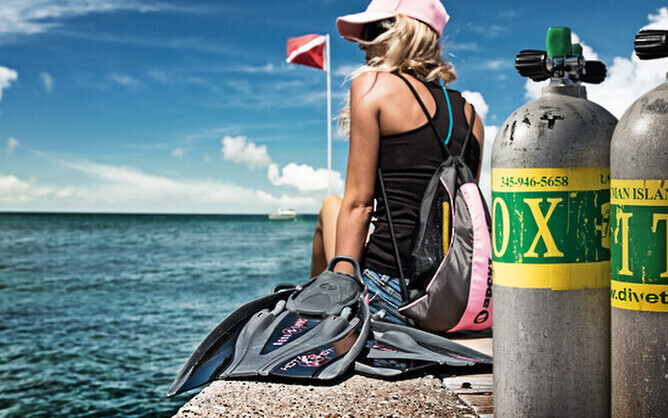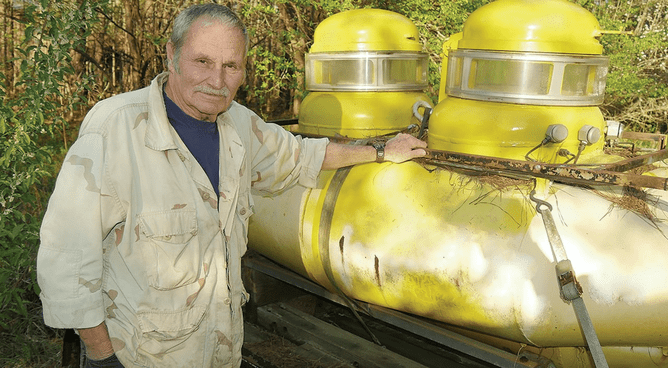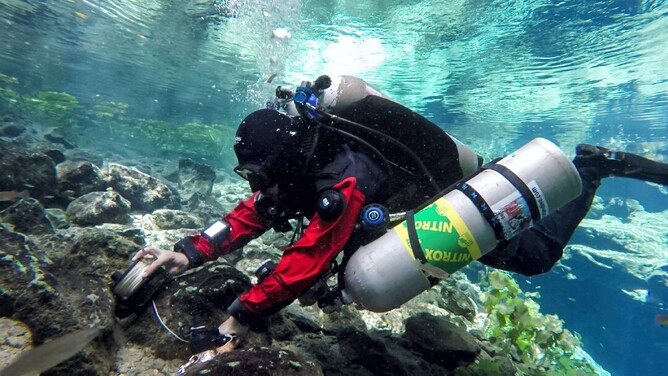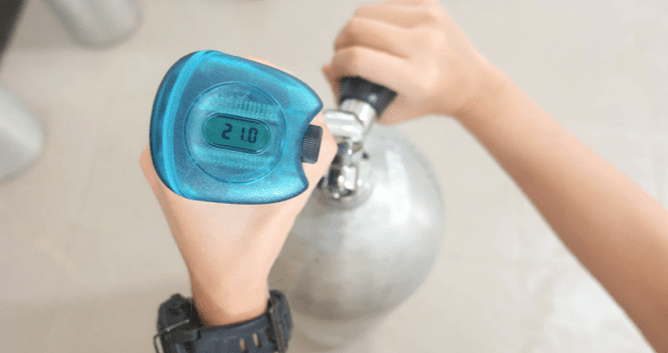The History of Enriched Air Nitrox
Enriched Air Nitrox, commonly known as EANx or simply Nitrox, has revolutionized the way divers explore the underwater world. This specialized breathing gas mixture, which contains a higher percentage of oxygen than regular air, has a rich history that spans several decades. In this blog post, we will embark on a journey through time to explore the origins, development, and significance of enriched air nitrox in the world of recreational and technical diving.
The Birth of Nitrox
The concept of using oxygen-enriched breathing gases dates back to the early 20th century when it was primarily explored for deep-sea diving and military applications. During World War II, military divers began experimenting with oxygen-enriched mixtures to extend their underwater missions. This marked the first significant step in the evolution of Enriched Air Nitrox.
However, it wasn't until the 1950s that the recreational diving community began to take an interest in Enriched Air Nitrox. Dr. Morgan Wells, a pioneer in diving medicine, conducted research on the effects of different breathing gases at various depths. His work laid the foundation for the development of modern Nitrox diving.
Dr. J Morgan Wells
The NAUI Era
The National Association of Underwater Instructors (NAUI) played a pivotal role in popularizing Nitrox diving during the 1960s and 1970s. As the first major diving organization to embrace Enriched Air Nitrox, NAUI introduced the concept to the mainstream diving community.
One of the key figures in this movement was Dick Rutkowski, a NAUI instructor and diving enthusiast. Rutkowski collaborated with Dr. Wells to create standardized tables and procedures for Nitrox diving. This effort led to the publication of the first recreational Enriched Air Nitrox diving tables, making it more accessible to divers.
Commercial Diving and Technical Diving
While recreational divers were beginning to explore the benefits of Enriched Air Nitrox, commercial divers were already well-versed in its advantages. In the commercial diving industry, where deep-sea operations were common, Enriched Air Nitrox was used to reduce the risk of decompression sickness and improve safety.
The 1980s saw the emergence of technical diving, a subset of recreational diving that focused on deeper and more challenging underwater environments. Technical divers quickly recognised the advantages of Enriched Air Nitrox for extending bottom times and reducing decompression obligations. Nitrox became a staple in the toolkit of technical divers, allowing them to explore shipwrecks, caves, and deep reefs with greater efficiency.
Enriched Air Nitrox Today
In the 21st century, Enriched Air Nitrox has become a standard offering in many dive shops around the world. Divers can choose from a range of Nitrox mixtures, with the most common being Nitrox32 (32% oxygen) and Nitrox36 (36% oxygen). These mixtures are used for various types of diving, from recreational to technical, and offer several benefits:
Extended Bottom Times: The reduced nitrogen content in Nitrox allows divers to stay underwater longer without increasing their risk of decompression sickness.
Reduced Fatigue: Nitrox divers often experience less fatigue after dives compared to those using regular air, thanks to the lower nitrogen levels.
Enhanced Safety: Nitrox can provide an extra margin of safety by reducing the risk of decompression sickness.
Shorter surface intervals: Breathing less Nitrogen during dives means less Nitrogen uptake, therefor you can potentially shorten surface intervals in-between dives.
Nitrox Certification: All diving organisations like SSI now offer Nitrox certification courses, allowing divers to learn the proper procedures and safety measures for using Enriched Air Nitrox.
A better understanding of dive theory: During Enriched Air Nitrox training you will learn a lot more about diving physics and physiology.
Challenges and Considerations
While enriched air Nitrox has many advantages, it's not without its challenges and considerations. Divers must be aware of the following factors:
Oxygen Toxicity: Using Nitrox with high oxygen content at depth can lead to oxygen toxicity (Central nervous system and pulmonary), which can be life-threatening. Divers must adhere to safe depth (Maximum operating depth - M.O.D) and time limits.
Equipment Compatibility: Some dive equipment, particularly older gear, may not be suitable for Nitrox use. Divers should ensure their equipment is Nitrox-compatible.
Gas analysis: Analysing the gas mixture before a dive is essential to ensure it matches the expected composition and its maximum operating depth is established and understood. Divers need proper training to use analysers and calculate M.O.D's effectively.
The history of enriched air Nitrox is a fascinating journey that showcases the evolution of diving technology and practices. From its humble beginnings in military and commercial diving to its widespread adoption in recreational and technical diving, Nitrox has transformed the way divers explore the underwater world.
Today, Nitrox is a valuable tool that enhances safety and extends bottom times, allowing divers to experience the wonders of the deep with greater convenience and peace of mind. However, it's important for divers to receive proper training and follow safety protocols to fully enjoy the benefits of this remarkable breathing gas mixture. As technology and diving science continue to advance, we can expect further innovations in the world of Nitrox diving, opening up even more possibilities for underwater exploration.
We love Enriched Air Nitrox and regularly dive it when ever we can.
We also blend and sell Enriched Air Nitrox at our retail store in Rotorua.
We also run Enriched Air Nitrox training programs monthly, find out more by CLICKING HERE.
What are you waiting for?
Want to learn more about dive theory? CLICK HERE




